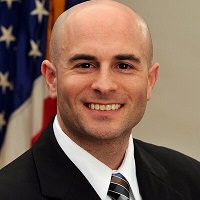 By Steven Posnack, M.S., M.H.S./Director, Office of Standards and Technology
By Steven Posnack, M.S., M.H.S./Director, Office of Standards and Technology
Twitter: @HealthIT_Policy
Twitter: @ONC_HealthIT
Our previously published blog post about the ONC Tech Lab explained how it would guide our approach to standards and technology and help lay the operational groundwork within ONC necessary to implement the Interoperability Roadmap, our near-term health IT strategy, and the Federal Health IT Strategic Plan. We described that through the ONC Tech Lab we would address four focus areas: 1) standards coordination; 2) testing and utilities; 3) pilots; and 4) innovation.
This post provides more detail with respect to our standards coordination activities. Standards coordination means focused interactions with standards development organizations (SDOs) and industry stakeholders comprised of the following activities:
- Improve feedback loops regarding the implementation and use of standards.
- Work together to come up with clearer, more specific, implementation guidance based on experience in the field.
- Connect new program, policy, and business requirements to technical standards and infrastructure needs; and
- Serve as a “catalytic convener.”
Here are a few examples of standards coordination work to date:
- Kicked off in 2015, the Interoperability Standards Advisory (ISA) is the cornerstone of our standards coordination work. The ISA is updated through an annual process, which includes two rounds of public comment and recommendations from the Health IT Standards Committee. (First round comments are due March 21, 2016).
- In the fall of 2015, we entered into a cooperative agreement with HL7 to focus on several aspects related to the Consolidated CDA (C-CDA®) standard. Early work through this partnership has yielded a C-CDA “implementation-a-thon” with another planned in April as well as a C-CDA rendering challenge aimed at improving the way in which structured data from the C-CDA is presented to health care providers. HL7 is also working on a C-CDA 2.1 companion guide and best practice implementation examples.
- Also in the fall of 2015, we entered into cooperative agreements with HL7 and NCPDP to analyze their standards testing infrastructure and ability to measure the adoption and use of their published standards in the field. Across the board, getting better metrics is important to the Nationwide Interoperability Roadmap and this early work will help inform how we as a nation can move from counting transactions supported by a standard to assessing the impact of its use.
- On April 5th and 6th, 2016 in collaboration with the Federal Health Architecture, we are holding a provider directory workshop (we intend to webcast plenary sessions). This workshop is a prime example of ONC serving in the role of catalytic convener. Our goal for this workshop is to get stakeholders involved in directory work together to exchange ideas and create momentum toward shared solutions that can further support interoperability.
- Also on April 8th, 2016, we will be convening industry stakeholders and SDO leaders to discuss how to improve standards implementation feedback loops “from the field to the framers.” This work complements our ongoing participation and open dialogue with the SDO Charter Organization.
This post was originally published on the Health IT Buzz and is syndicated here with permission.
